Abstract
OBJECTIVES. Despite decreases in the number of cocaine users since 1985, the consequences of cocaine use continue to rise. This paper provides descriptive data on frequent cocaine users that will help to explain these diverging trends and enable treatment planners to better predict the types of cocaine users who are likely to seek treatment. METHODS. Data from the National Household Survey on Drug Abuse were used to study the characteristics of frequent cocaine users since 1985. The 1991 data were used to compare frequent users with infrequent users and nonusers. RESULTS. Since 1985, frequent cocaine users have become older. In 1991, they were likely to be unemployed (32.4%), unmarried (82.3%), and without health insurance (39.4%). Most were cigarette smokers (86.8%) and marijuana users (88.4%), and 32.0% reported getting drunk weekly. Criminal behavior was more likely among frequent cocaine users than among frequent cocaine users than among infrequent users and nonusers. Almost a third (30.0%) reported drug abuse treatment experience in the past year. CONCLUSIONS. Despite the recent decreases in overall prevalence of cocaine use, the need for treatment of cocaine abusers will continue. Treatment must address multiple problems that occur in conjunction with cocaine abuse.
Full text
PDF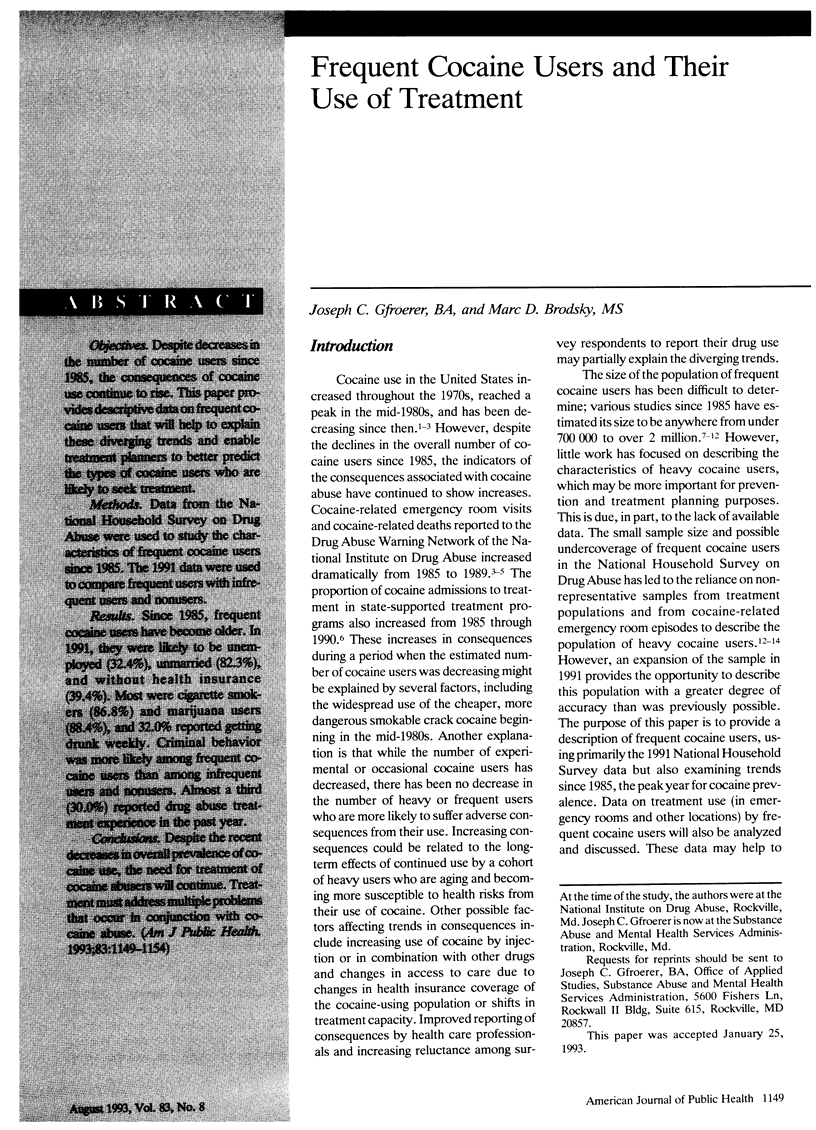
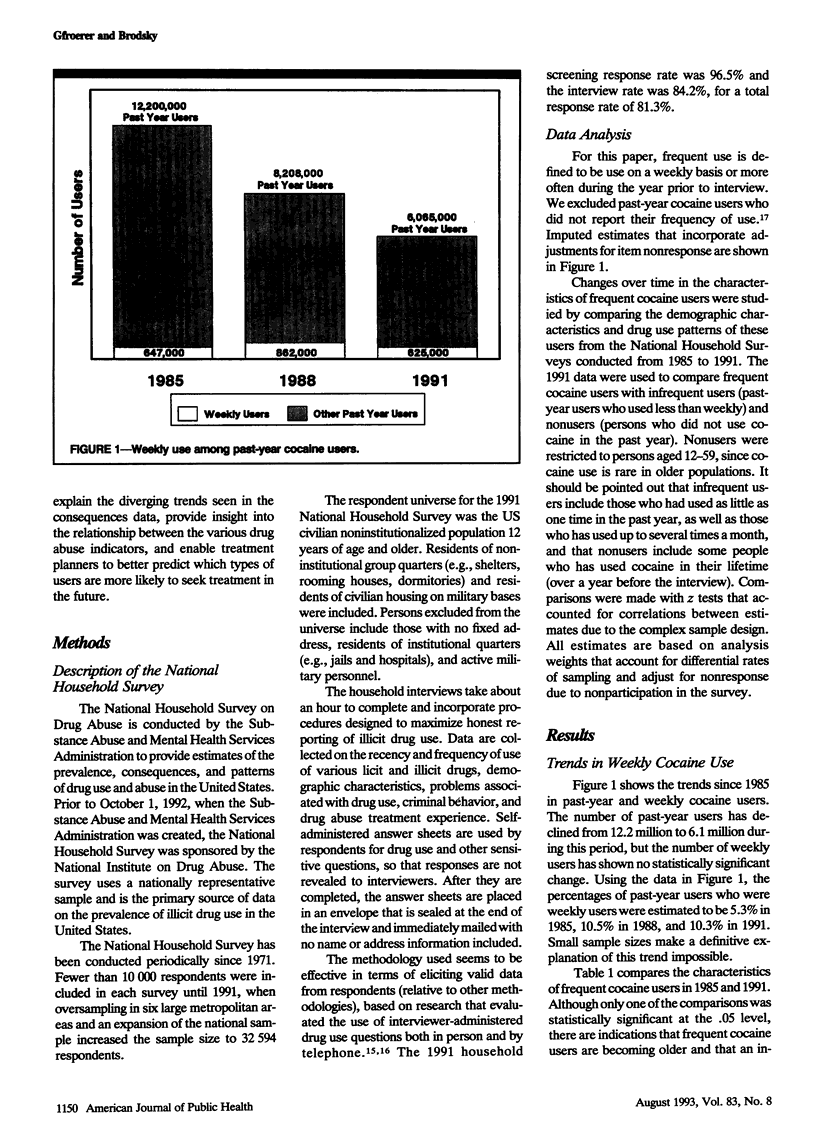
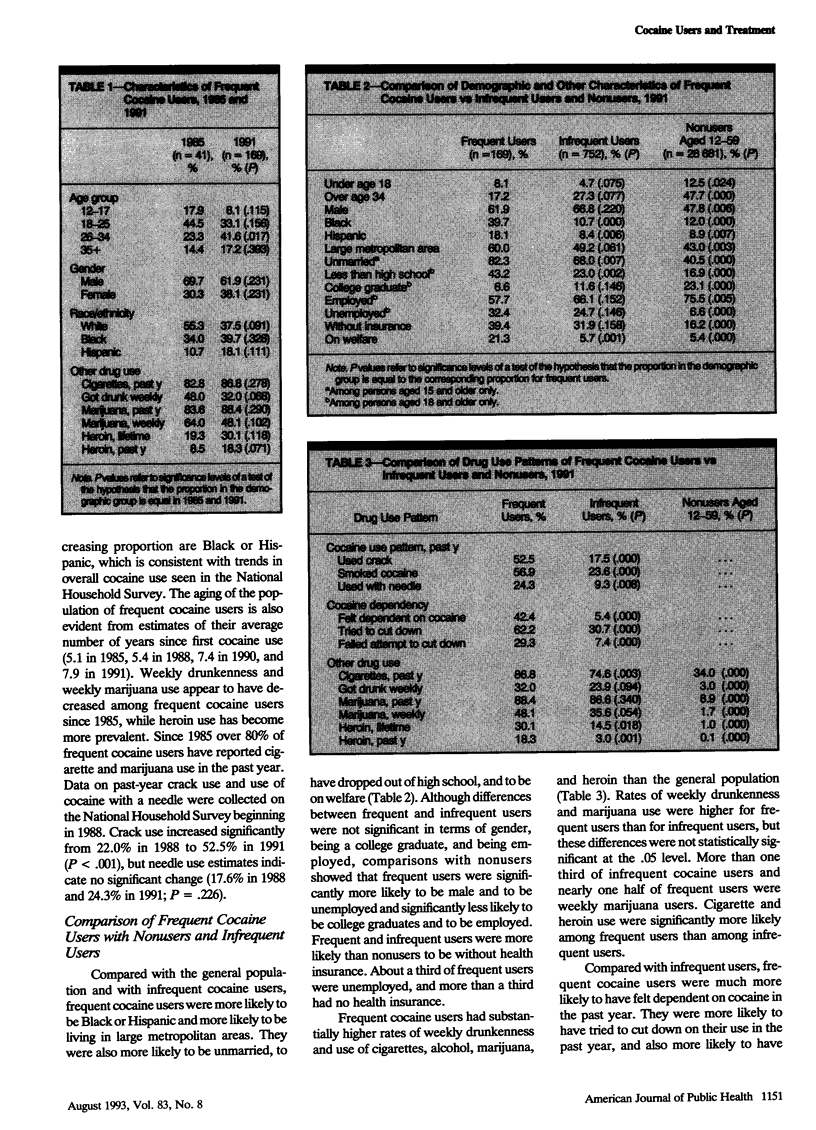
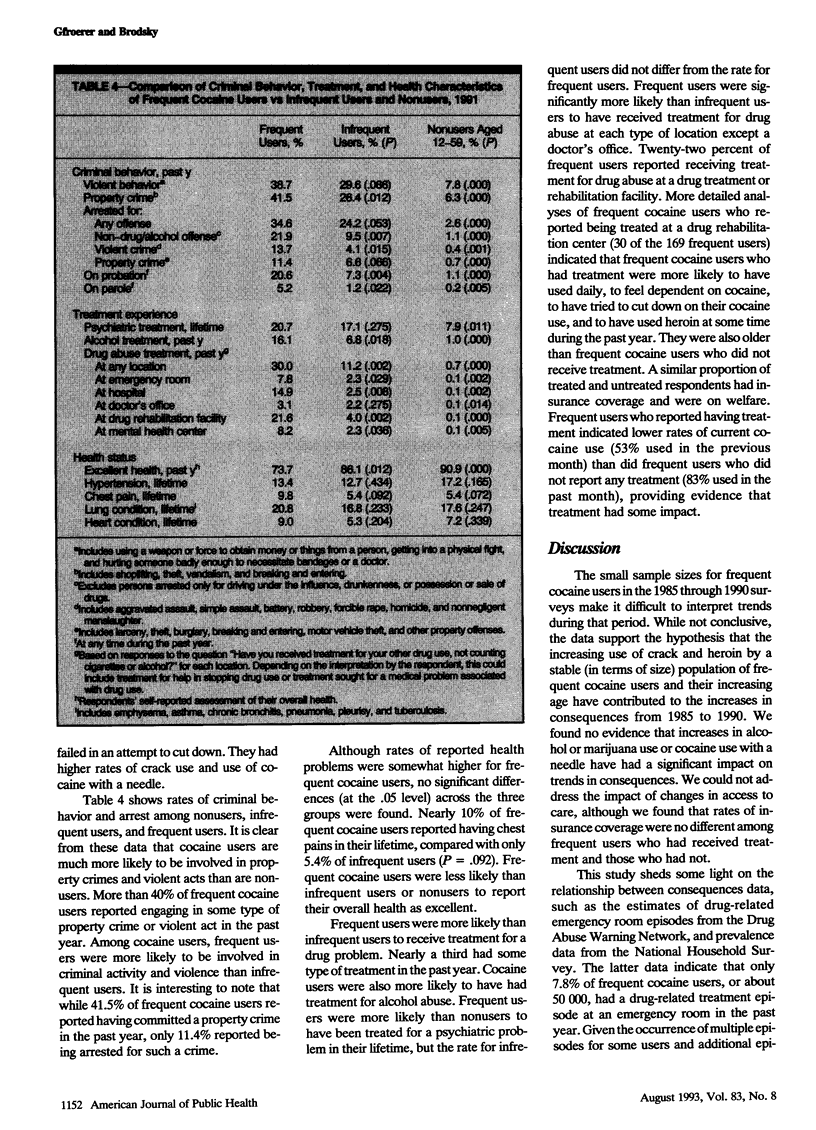
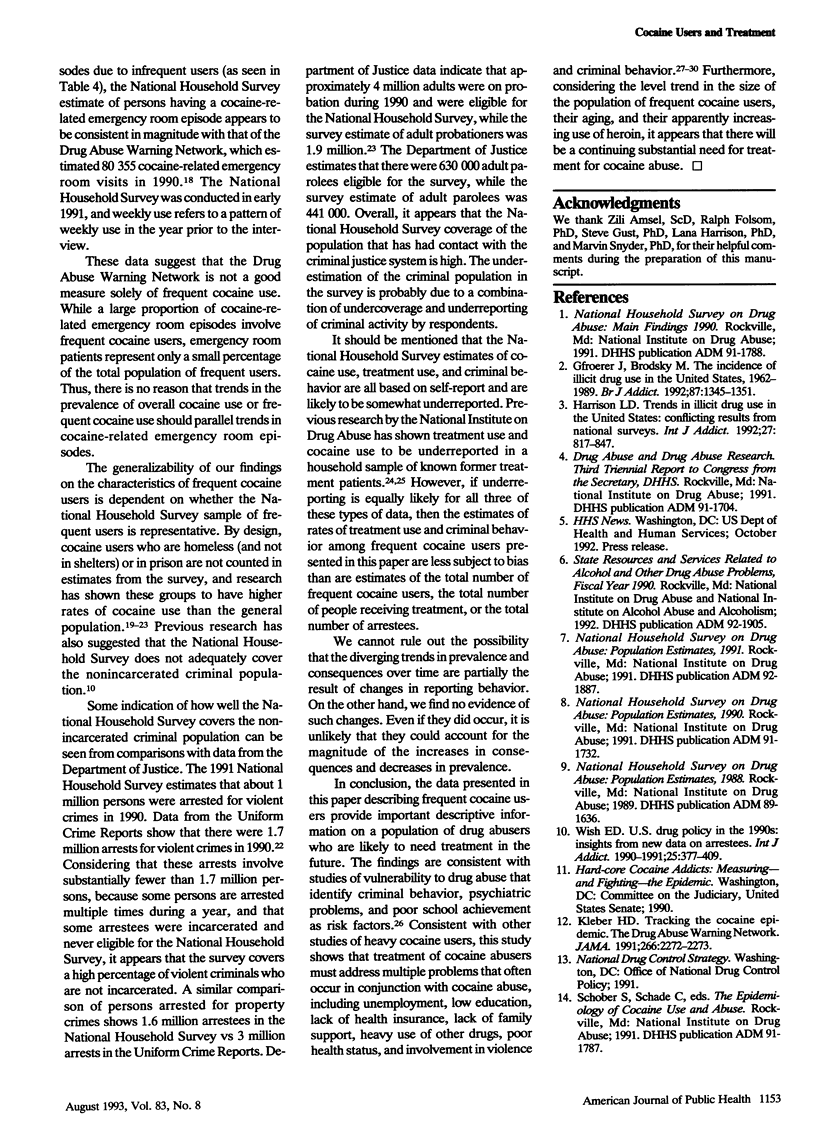
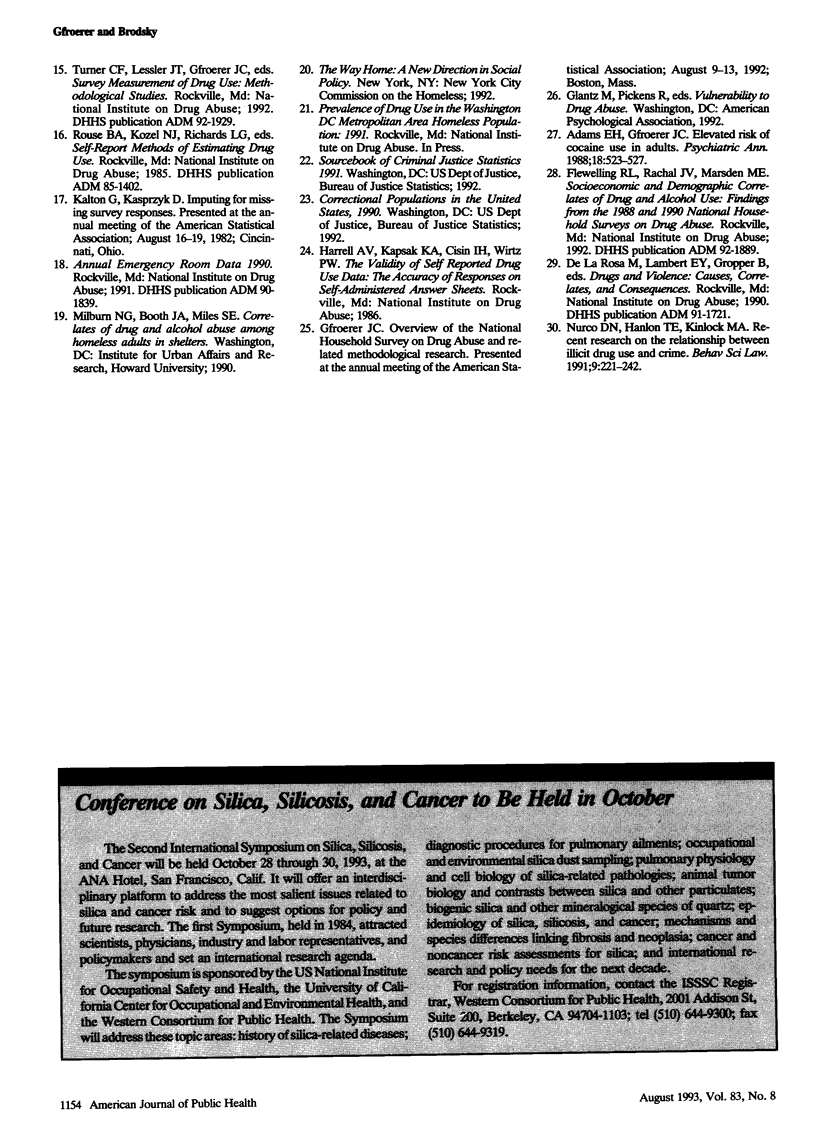
Selected References
These references are in PubMed. This may not be the complete list of references from this article.
- Gfroerer J., Brodsky M. The incidence of illicit drug use in the United States, 1962-1989. Br J Addict. 1992 Sep;87(9):1345–1351. doi: 10.1111/j.1360-0443.1992.tb02743.x. [DOI] [PubMed] [Google Scholar]
- Harrison L. D. Trends in illicit drug use in the United States: conflicting results from national surveys. Int J Addict. 1992;27(7):817–847. doi: 10.3109/10826089209068769. [DOI] [PubMed] [Google Scholar]
- Kleber H. D. Tracking the cocaine epidemic. The Drug Abuse Warning Network. JAMA. 1991 Oct 23;266(16):2272–2273. [PubMed] [Google Scholar]
- Wish E. D. U.S. drug policy in the 1990s: insights from new data from arrestees. Int J Addict. 1990;25(3A):377–409. doi: 10.3109/10826089009071049. [DOI] [PubMed] [Google Scholar]


